The Skerryvore lighthouse off the island of Tiree is a masterpiece of engineering. The museum village near Hynish shows how the lighthouse was built.
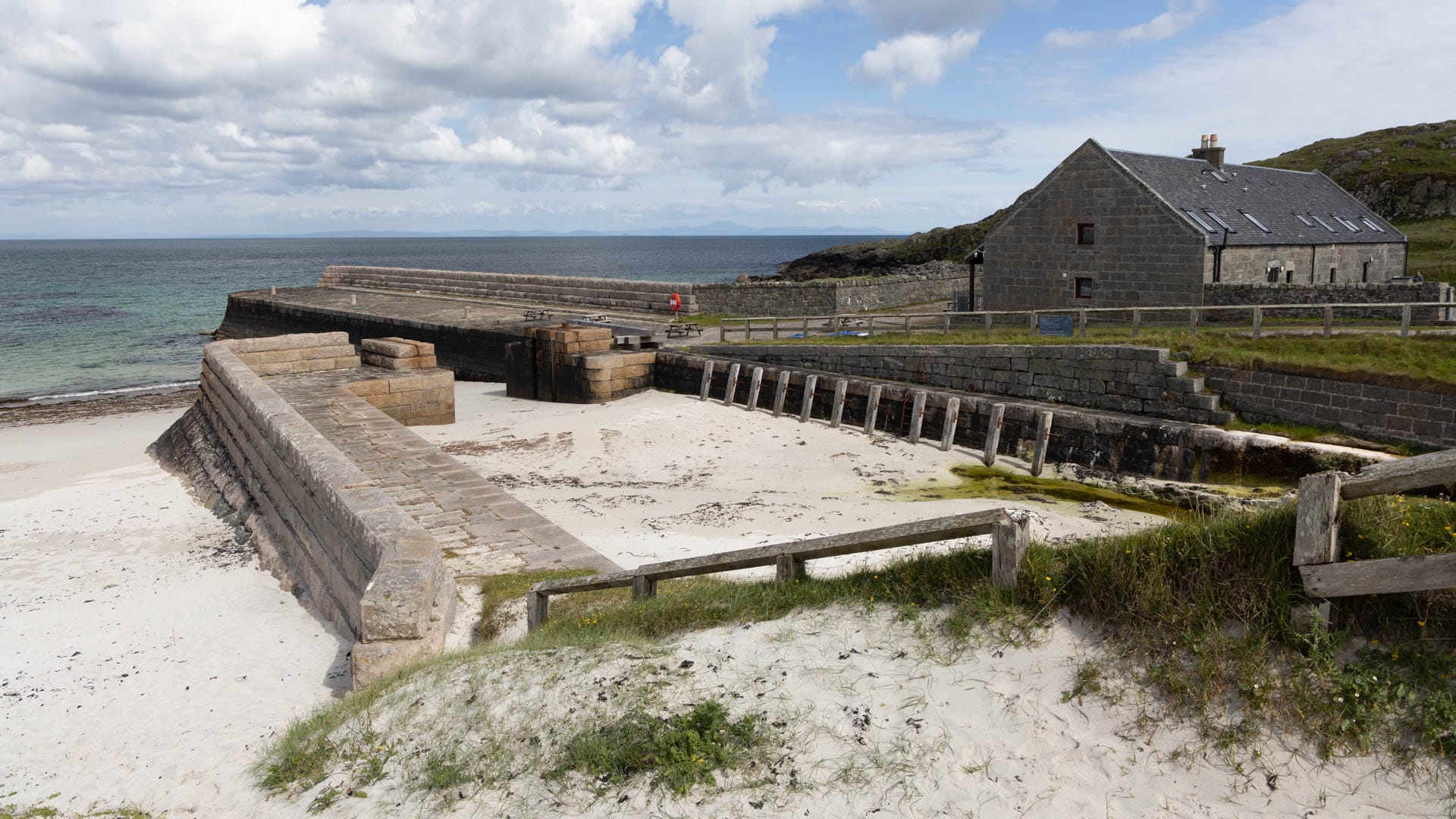
A line in the landscape – that is the reason for the collection of strange buildings in Hynish on Tiree. If you climb the hill, squint your eyes and look to the south-west, you can see this line in the distance. That is Skerryvore Lighthouse.
Skerryvore comes from the Gaelic An Sgeir Mhòr, “large archipelago island”. In other words, there is a lighthouse in the middle of the sea on a lonely rock. Directly and constantly exposed to the elements. What kind of madman planned this? A Stevenson, of course, because they planned and realised almost all the lighthouses in Scotland. But Skerryvore was of a different calibre.
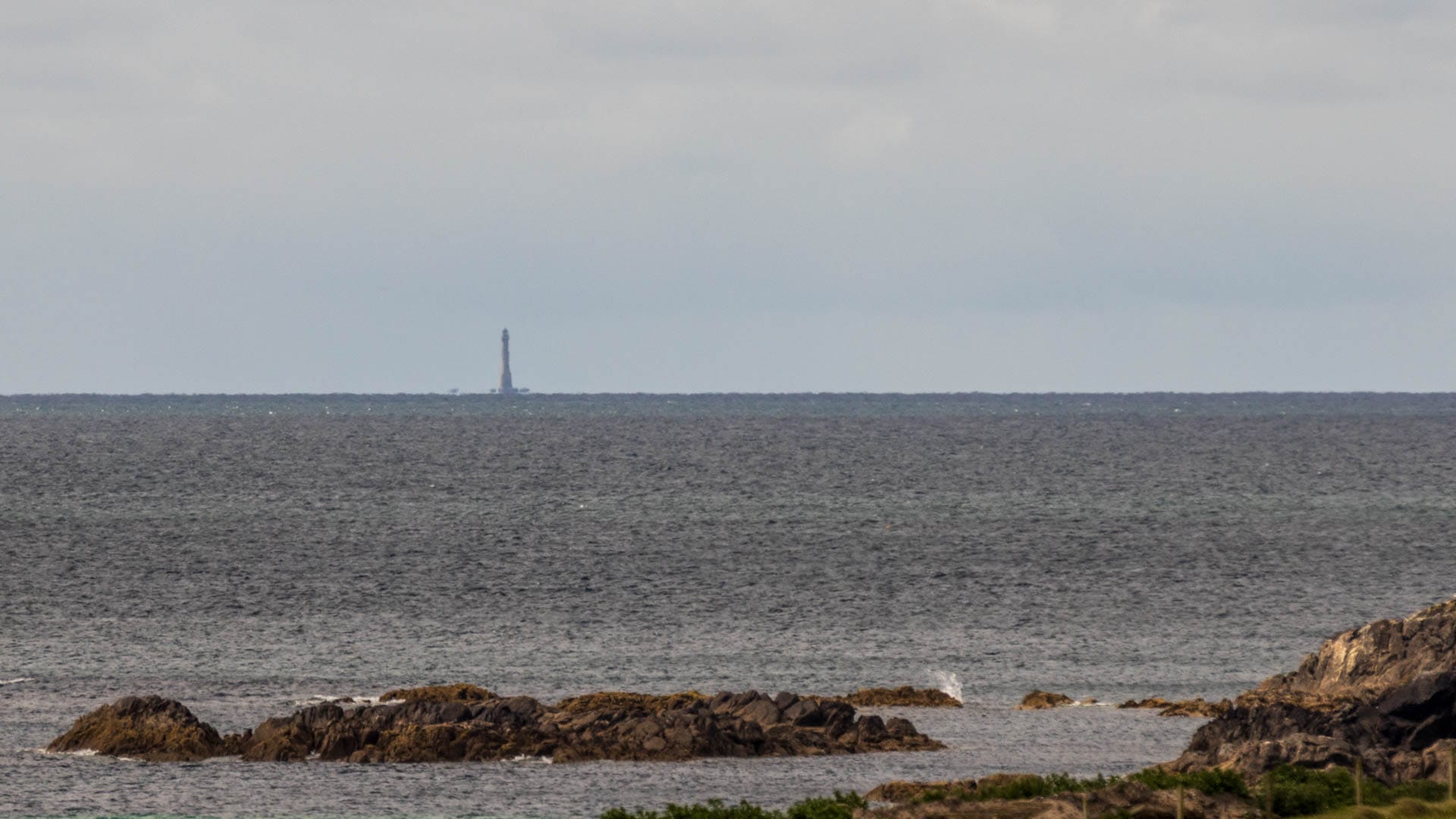
But why put a lighthouse on a rock in the sea at all? The answer: it is precisely these rocks that make the lighthouse necessary. This is because a reef runs along it, which many ships ran aground on and sank in the 19th century. The lighthouse was intended to provide a warning.
The problem: not only did a lighthouse on the rock have to be particularly stable, there was also no room for the building materials. And the workers on the rock were also constantly at the mercy of the elements. So it needed tough guys, hard rock and a clear supply chain. Designer Alan Stevenson identified Hynish in the south-east of the island of Tiree as a key part of this chain. From here it was only about 16 kilometres to the lighthouse.
Hynish formed the base. An entire village grew out of the ground here. Workers’ quarters, warehouses, a smithy, a signal tower, its own harbour basin – and all made of granite.
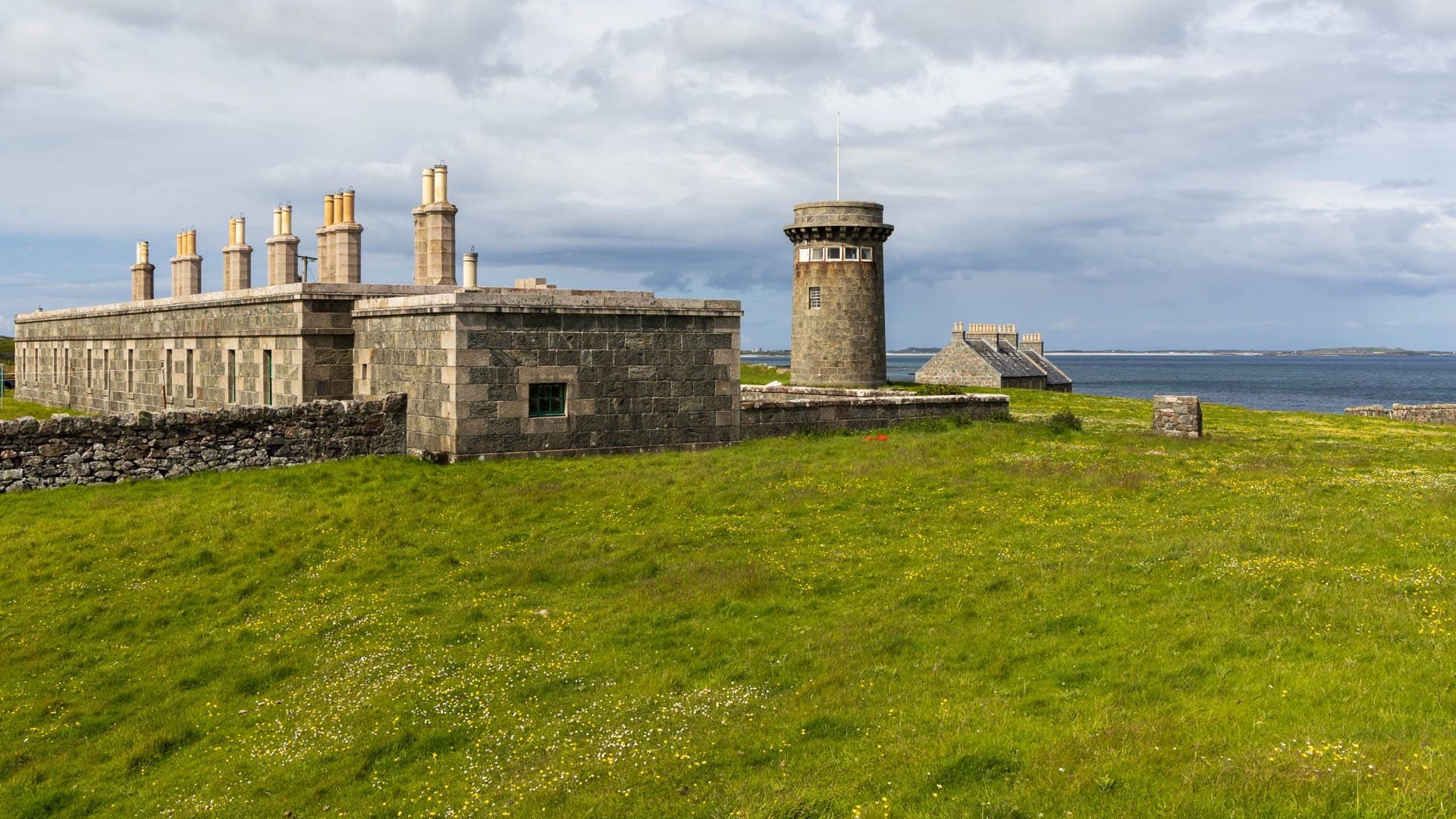
Let’s stay with the granite for a moment: there is also a quarry on the site. But Stevenson quickly realised that the granite from Tiree was almost impossible to work. And so Alan Stevenson decided to get stone from the Isle of Mull. Incidentally, the same stone was also used for the Ardnamurchan Lighthouse. Over 80 stonemasons created over 4,300 blocks in Hynish, which then had to be shipped over to the small island.
The harbour was intended to be operational for a long time, as the lighthouse keepers were also to be able to leave here later. For this reason, the harbour even had a dry dock. As sand quickly accumulated here, Stevenson constructed a kind of flushing system. Water could flow through a tunnel from a reservoir at the top of the hill and flush out the sand.
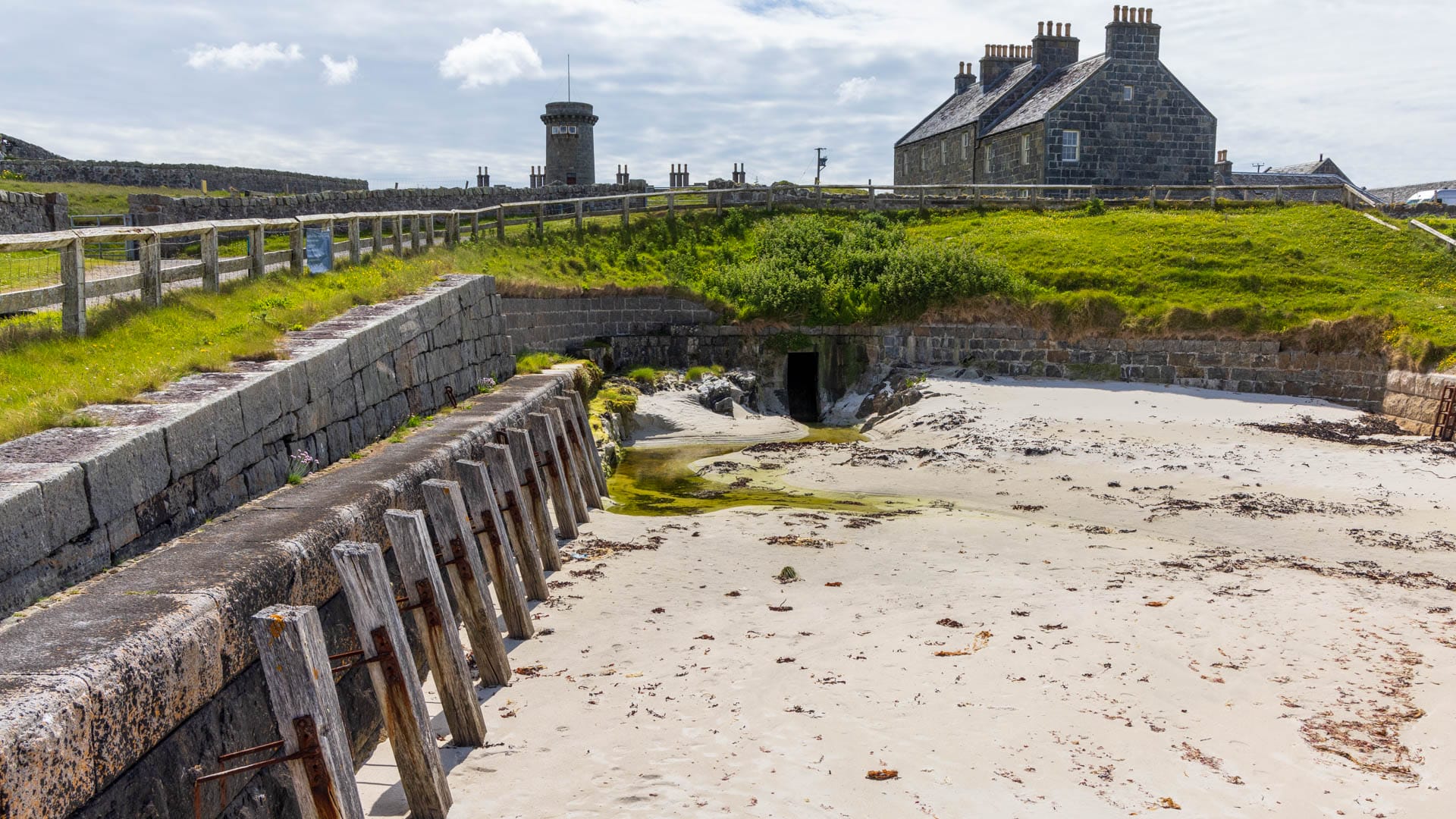
Today, of course, the mechanism has been decommissioned and the basin resembles a beach.
There is a long building right next to the harbour. Alan Stevenson himself once resided here. Today it houses one of the few restaurants on the island.
And then, of course, there is the former workshop. It houses the exhibition. Posters tell the story of Hynish and Skerryvore. Artefacts from around 180 years are displayed in showcases.
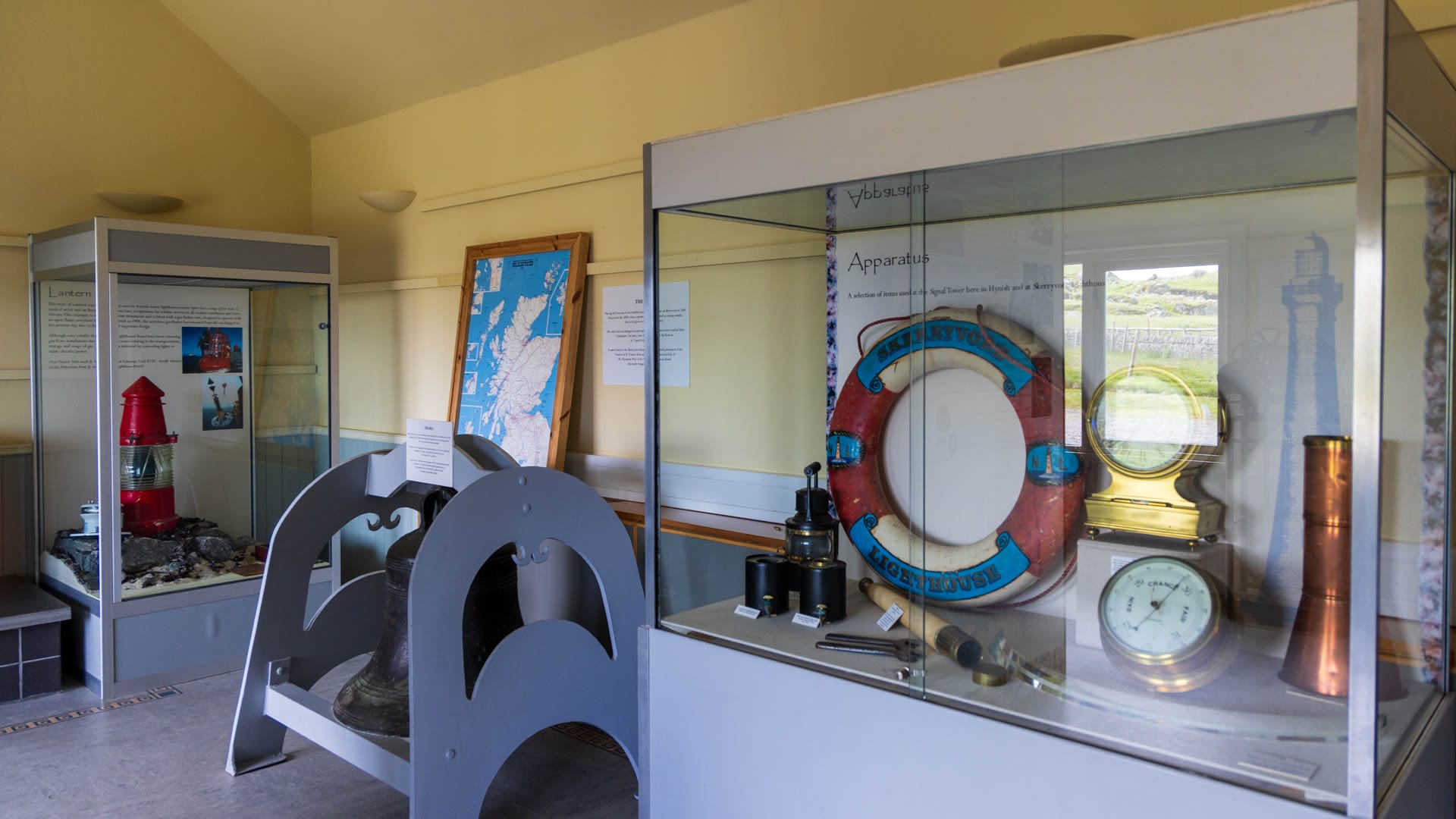
Once you have seen everything here, you should take your steps up the hill. There you will find the typical quarters of the lighthouse keepers. And next to it is a small tower with a wide window front. This was the signal tower. There was no radio back then, so the keepers on Skerryvore had to communicate with the workers on land using light signals – if visibility allowed.
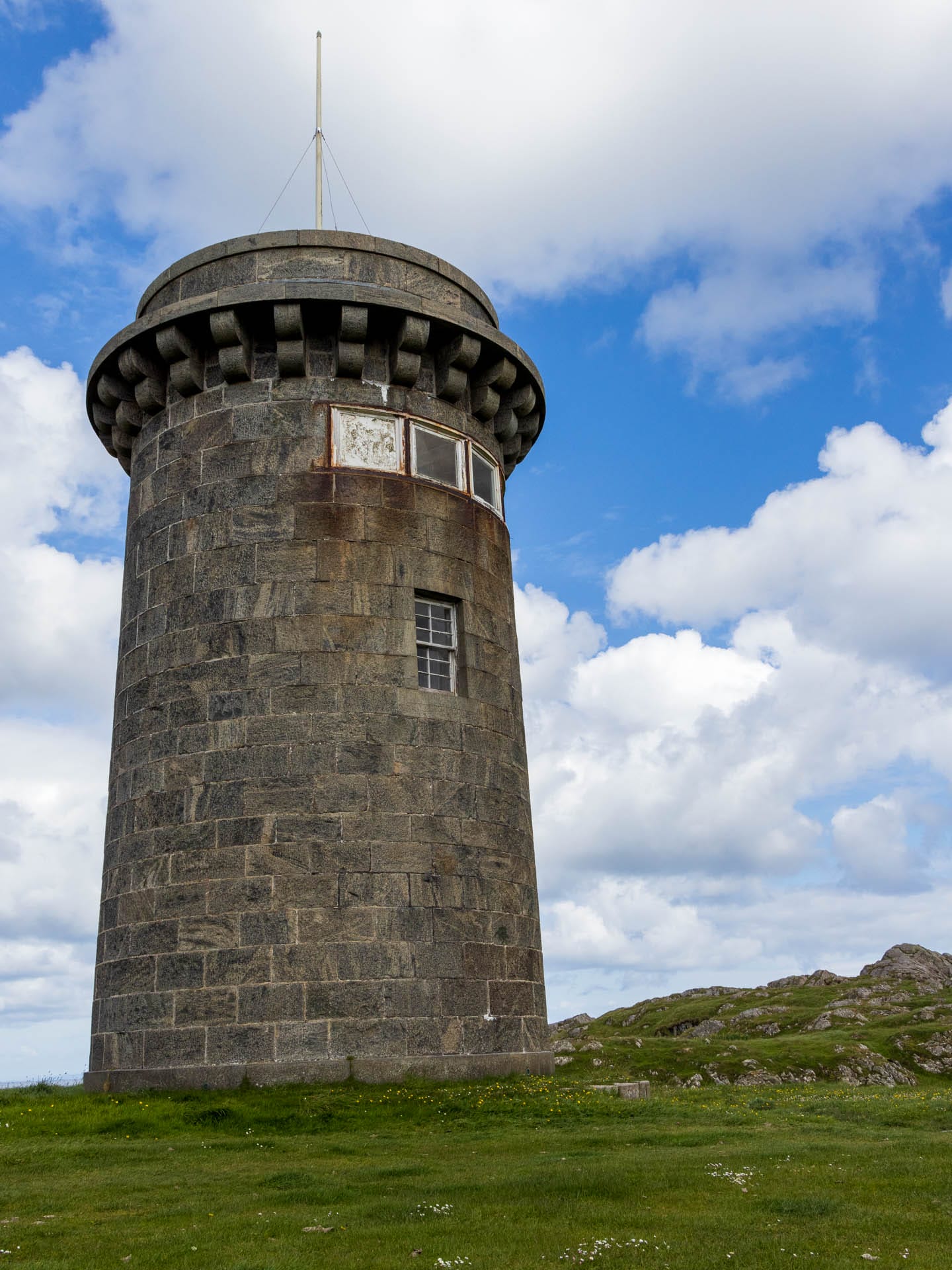
The Skerryvore Lighthouse Museum in Hynish is certainly one of the most important sights on the island of Tiree. Tiree Sea Tours will take you to the lighthouse itself. However, the trips are not so frequent and depend on the weather.
How to get there
With satnav: The postcode “PA77 6UG” will take you to Hynish.
Without sat nav: From the main town of Scairinish, follow the coast road south. Hynish is signposted at most forks in the road.
Parking is available directly in front of the museum.